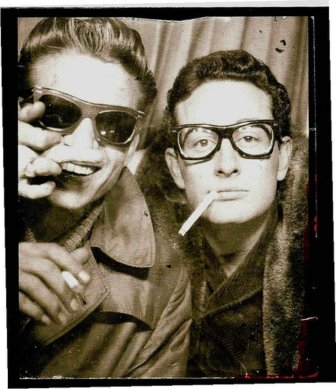There’s nerds and then there’s nerds. The above ‘PSA’ from Portlandia makes the distinction well. It’s a distinction that I suspect may be the savior of culture both popular and critical. The preceding statement might sound a bit inflated, but I’ll explain.
Post Modernism has been around for a long time – long enough for us to hate using the word and for it to mostly remind us of horrible interior decorating. And though we’ve largely moved beyond many of Post Modernism’s tenants (arguably), one aspect notably remains as a sort of white elephant legacy: not saying what we mean or saying a lot to say nothing at all. Maybe its due to Post-Structuralism and Derrida, or a hyper-sensitivity to hierarchy and imposition. Regardless, at times it feels as if critical discourse avoids saying anything definite in order to steer clear of becoming part of some meta-narrative. Other times it seems to eschew saying anything especially sincere to avoid being pegged as sentimental or romantic.
As can be predicted this practice flowed from theory to praxis, discourse to artwork. If you remain skeptical, read a recent artist statement. This typical collection of 200 or so words is like money laundering for ideas. By the time you reach the last word its unclear where any concept came from or if there were even any actual ideas at all. For many artists, it seems, saying anything definite about your own work is akin to “imposing your ideas and values”. Arguably, Structuralist and Post-Strucuralist ideas that initially empowered viewers now disenfranchise artists. This practice of saying a lot to say very little has moved from critical theory to art praxis, and now from art praxis to popular culture.

Thus, the rise of the hipster. Of course the term hipster has been around since the beat generation. However, we’re speaking about the term’s most recent bearer: the Brooklyn-dwelling, beard growing, bike-peddling, vintage-retro-everything, lumberjack lookalikes. This is an unfair stereotype but it is helpful. What ultimately characterizes the definition-elusive hipster is a tongue-in-cheek eclecticism.
A hipster’s taste in music and clothing, for example, can be a bit difficult to pin down – it spans time, styles, cultures. A common thread in hipster preferences, however, is a shade of irony. At times, it seems, a hipster doesn’t like a particular book or album, but instead likes liking it. Even hipster humor is often colored with such deflection, sarcasm a prominent trait. For example, during the 2012 election I saw a pro-Obama shirt made for hipsters. It read: “I Love Mitt Romney”. Also consider the recently popularized terms Hipster Racism and Hipster Sexism. They are techniques to parade one’s open-mindedness and tolerance by acting racist or sexist…ironically, of course.
Early on, the hipster preoccupation with pop-culture present and past associated the bunch with nerds who shared a similar preoccupation. Beyond this similarity, though, (and the appropriation of “nerd fashion”) the two are especially disparate groups. Indeed, their respective approaches to and relationships with popular culture are diametrically opposed.
Hipsters are eclectic in their taste but it cannot be described as pastiche – the various sources aren’t celebrated but the eclecticism itself is. Hipster preoccupation and reworking of pop-culture is little more than a superficial affectation. Nerds, on the other hand, unabashedly love their pop-culture object of attention. Yes, it may be a nerd’s defining characteristic – sincere obsession.

Consider the related Japanese group and term otaku. In Japan otaku are occasionally collectively defined by a certain social awkwardness. Predominantly, however, otaku are characterized by their obsessive interests. While otaku originally referred to intense fans of manga and anime, the term’s scope has since widened to include various interests.
Nerds and otaku share some similarities, two of which can be especially important to the future of art theory.
(1) Both are social groups marginalized because of their intense unguarded affection for their respective pop-cultural obsessions. The otaku/nerd way of interacting with pop-culture and culture in general stands in direct opposition with much of contemporary art. The otaku/nerd attributes of sincere affection, obsession, and even a certain disconnect from social reality stands in stark contrast to the cynicism, sarcasm, and reticence to make statements that are categorical and/or heartfelt. Despite their glaring differences certain attributes of nerd and otaku culture are increasingly pervading contemporary art through a certain ‘trickle-up’ effect.
(2) Both terms – “nerd” and “otaku” – had pejorative beginnings that are steadily changing. It may be no coincidence that both terms were perhaps most disparaging in the early to mid-1980’s – Postmodernism’s zenith. Regardless, both terms are being progressively seen as positive, people more often self-identifying as one or both. This is important because it may be pointing to a trend and shift. Just as Postmodernism’s cynicism traveled from critical theory to art praxis and finally to pop culture, Nerd/Otaku Earnestness is already traveling from pop culture to art praxis, and may eventually make its way into critical theory – trickle-up.
Digital and net art may serve as the mediator between pop culture and critical theory for this Nerd/Otaku type earnestness. Rather than rejecting or resisting the spectacle many such artists embrace it. Given, pop artists embraced pop culture in their own way. However, a new generation of artists embrace pop culture until it says “okay, I can’t breathe, you’re squeezing too hard”, then embrace it further. The medium’s obsession with pop and net culture seems to simultaneously be an affectation and sincere. The existence is paradoxical, confusing and exciting.
Perhaps digital art may eventually move beyond its initial obsessions and onto more prescient issues. Many would say that it already has. Regardless, my personal hope is that soon it may move beyond digital art into other media and finally into the way we think about art and art making. I am pleased that we’ve left sentimentality behind with the Romantics and left grandiosity behind with the Modernists. I think it’s now time to leave cynicism behind with the Post Modernists.